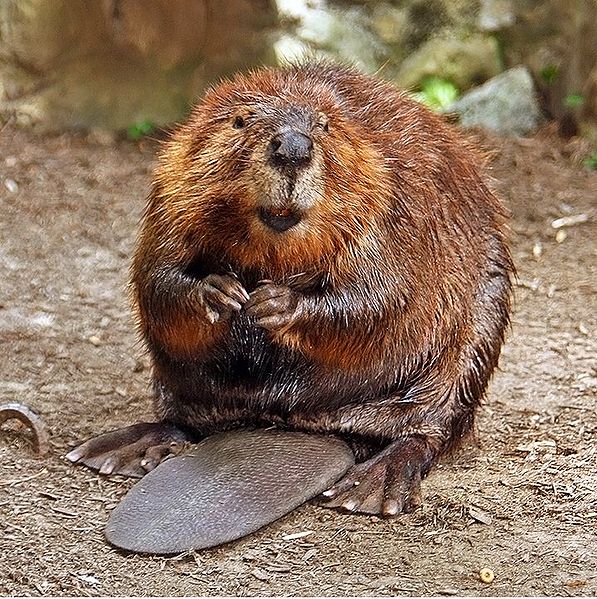Classification – Animalia – Chordata – Mammalia – Rodentia – Castoridae – Castor – Canadensis
The North American Beaver is a large rodent, one of the largest in the Smoky Mountains, that spends most of its time in the water, building dams to change the course of the water systems to establish homes for it and its young. While they are mostly nocturnal, it is possible to see the North American Beaver around the GSMNP right before dawn and right after sunset.
Behavior and Habitat
Of course, one of the easiest ways to spot a beaver is to look for a beaver dam and for the trees that have been felled by beavers in the park. The beaver dam is a conglomeration of logs, twigs, mud and sticks that is designed to back the water up and make the water around the beaver lodge deep enough to keep it from freezing during winter. As the water levels rise, it floods the forest land around the river behind the dam. This flooded area gives the beaver access to its favorite foods: leaves, buds and the inner bark of young trees.
The beaver lives in small family groups and they work together to construct their dams. Beavers, unlike most animals, mate for life and their young – which are known as kits – stay with their parents for around two years. Beaver dams and the ponds that they form have been shown to have beneficial effects on the other plants and animals that are around them. For instance, beavers have been shown to have a beneficial effect on many bird species by providing water and areas for waterbirds to find food and the fact that some of the young trees get felled by the beavers means that older trees will have the ability to produce a lush canopy for homes for birds.
 In the Smokies
In the Smokies
Though they are hard to find, there are plenty of beavers in the Smokies. From Cades Cove to Cataloochee you will see the effects on beavers in the National Park and you will possibly get to see them building their dams in and around streams and rivers in the park as well. When you cross the bridge in Cades Cove – the one that is almost at the halfway point – you will see plenty of trees that have been downed by beavers in the wild. On both sides of the bridge there are trees that have the tell-tale bite marks from the North American Beaver.
And if you are looking for a little more up close look at the beaver hike the area between the two crossover roads in the Cades Cove. In the center of this area there is a good sized beaver dam on a small creek that has flooded a good portion of the area. And while this is not a deep beaver dam it is a very successful one that has opened up this area for a more diverse set of species to inhabit. This is only one of the advantages to having beavers in the park. Though they are part of the rodent family, they are certainly not rodent in nature.
